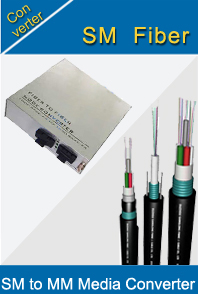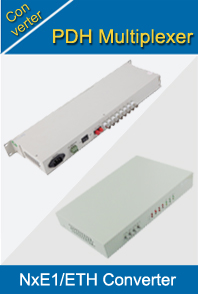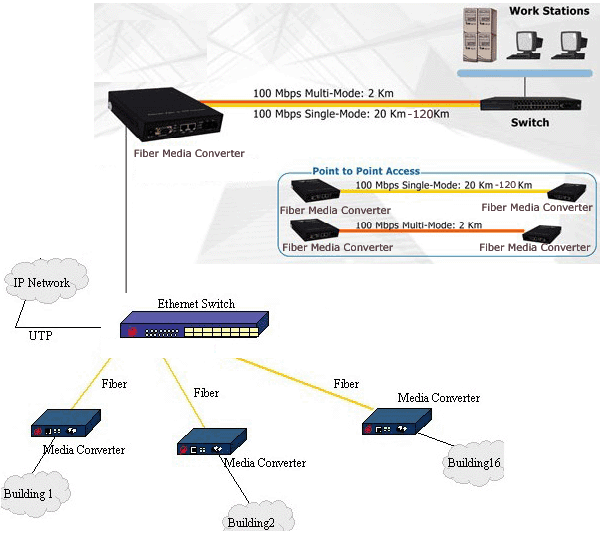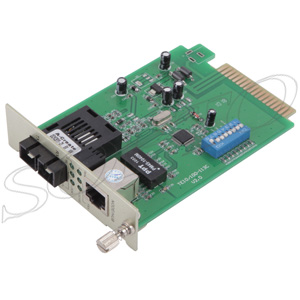-

- Sopto Home
-

- Special Topic
-

- Converter Knowledge
-

- A Guide to Fiber Optic Cable & Coxial Media Converter
Converter Knowledge
- Form Factors and Application of Ethernet Media Converter
- Ethernet over 4 E1 Converter Brief Introduction
- What is the Difference between RS232 and RS485 Serial Interfaces
- What is the Difference between RS232 and RS485 Serial Interfaces
- How to Convert an Analog Telephone to VoIP Protocol?
- How to Find the Internet Protocol Address and Media Access Contr
- How to Convert from Fast Ethernet to Fiber Optics?
- How to Connect a Fiber Converter?
- How to Convert Ethernet to Fiber Media Converters?
SOPTO Special Topic
Certificate



Guarantee
Except products belongs to Bargain Shop section, all products are warranted by SOPTO only to purchasers for resale or for use in business or original equipment manufacturer, against defects in workmanship or materials under normal use (consumables, normal tear and wear excluded) for one year after date of purchase from SOPTO, unless otherwise stated...
Return Policies
Defective products will be accepted for exchange, at our discretion, within 14 days from receipt. Buyer might be requested to return the defective products to SOPTO for verification or authorized service location, as SOPTO designated, shipping costs prepaid. .....
Applications
An Ethernet to Fiber Media Converter can also be used where there is high level of electromagnetic interference or EMI which is a common phenomenon found in industrial plants. This interference can cause corruption of data over copper-based ethernet links. Data transmitted over fiber optic cable however is completely immune to this type of noise. An Ethernet to Fiber Optic Converter therefore enables you to inter-connect your copper-ethernet devices over fiber ensuring optimal data transmission across the plant floor.
SOPTO Products
- Fiber Optic Transceiver Module
- High Speed Cable
- Fiber Optical Cable
- Fiber Optical Patch Cords
- Splitter CWDM DWDM
- PON Solution
- FTTH Box ODF Closure
- PCI-E Network Card
- Network Cables
- Fiber Optical Adapter
- Fiber Optical Attenuator
- Fiber Media Converter
- PDH Multiplexers
- Protocol Converter
- Digital Video Multiplexer
- Fiber Optical Tools
- Compatible
Related Products
Performance Feature
Converter Knowledge
Recommended


A Guide to Fiber Optic Cable & Coxial Media Converter
One topic that generates a lot of discussion is the transition from analogue to IP cameras. On new construction, it’s rapidly becoming a moot point — there are so many advantages to IP, and the cost advantage of analogue is rapidly disappearing — but there are a lot of analogue systems out there that are aging out.
In those cases, we often hear that people don’t want to replace the wiring and that it’s simpler to plug in a new analogue camera than go through the pain of conversion. That pain of conversion is rapidly becoming less and less painful.
How to use an analogue fibre-optic converter?
If you haven’t looked at the various media converters on the market, you’ll be pleasantly surprised. What started as a niche product for smaller manufacturers has rapidly hit the mainstream, and there are so many types of products out there that it’s hard to find an application that isn’t already well served. Ethernet fibre-optic media converters started the trend.
These were initially very pricey in the security industry but as people discovered that they were available in the IT industry for a third of the cost, security manufacturers came to their senses. They are simple to use: Unplug the analogue fibre-optic modules, plug in the Ethernet media converters, and you’re up and running.
Some tips: Buy gigabit converters as they don’t cost much more and turn every fibre line into a backbone.
At the device end, they need to be standalone units, but at the closet or head end you can use GBIC modules that plug into that port on your network switch if you’ve done your homework and bought switches with GBIC slots. And don’t go with the units that take a single fibre but cost more unless you have to. Since you have tremendous bandwidth with these modules, go ahead and use a dual fibre module if you have the strands available.
Remember, you can send hundreds of cameras over two strands of fibre, so if you’re replacing analogue modules with these converters you’ll have plenty of fibre left over.
Coaxial media converters
Coaxial media converters came next, and we are seeing more and more of them. They are sold in pairs, and again, they’re pretty simple. Unplug each end of the coax, plug a module on each end, and you have an Ethernet connection. Your speed will vary based on distance and the quality of the cable, but for a single camera or two, these work just fine.
Some tips: You get what you pay for, and the less expensive units don’t hold up.
Believe it or not, bigger is often better, as the physically smaller units seem to have less surge protection and poorer heat dissipation, contributing to early failure. That being said, we expect these to continue to get better and cheaper, making the case for conversion even simpler.
Ethernet extenders
If you have one of those applications that used unshielded twisted pair (UTP) cabling thinking it would make you future-proof, only to discover that your cable runs are all over the 100 meter limit for Ethernet, do not despair.
A variation of the coaxial media converter is the Ethernet extender; same principal, and often the same product in a different package.
Some tips: Just because you’re going over CAT5 cable doesn’t mean you have unlimited bandwidth — these units are not backbone worthy and are made for a few cameras, not an IDF closet.
The right cable
Again, there are a lot of flimsy and fragile products out there, so go with a brand, reputation, and warranty you can trust. Media converters are a valuable addition to any tool kit, but they aren’t a substitute for running the right cable in the first place. Remember the old adage: When the only tool you have is a hammer, pretty soon everything looks like a nail. That being said, there are times when only a hammer will do!
Sopto supplies high quality fiber media converters, like 10G Media Converter, PSE Media Converter and so on. For the newest quotes, please contact a Sopto representative by calling 86-755-36946668, or by sending an email to info@sopto.com. For more info, please browse our website.





